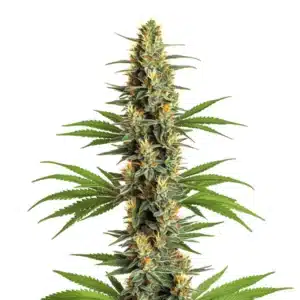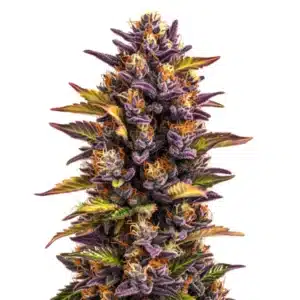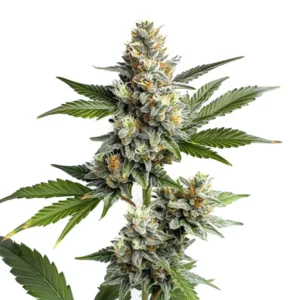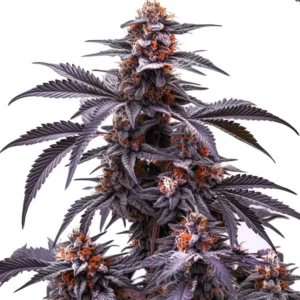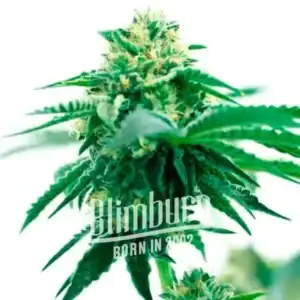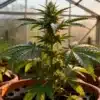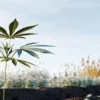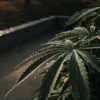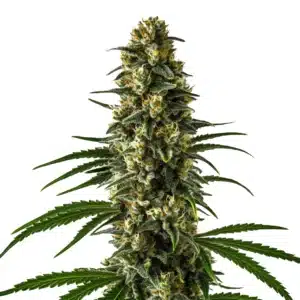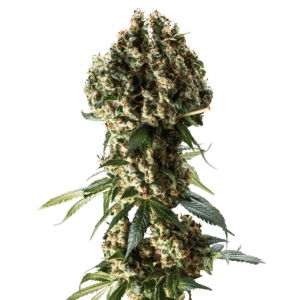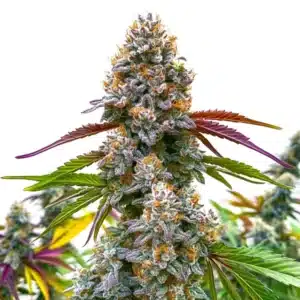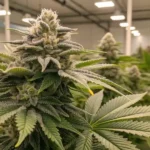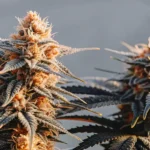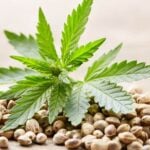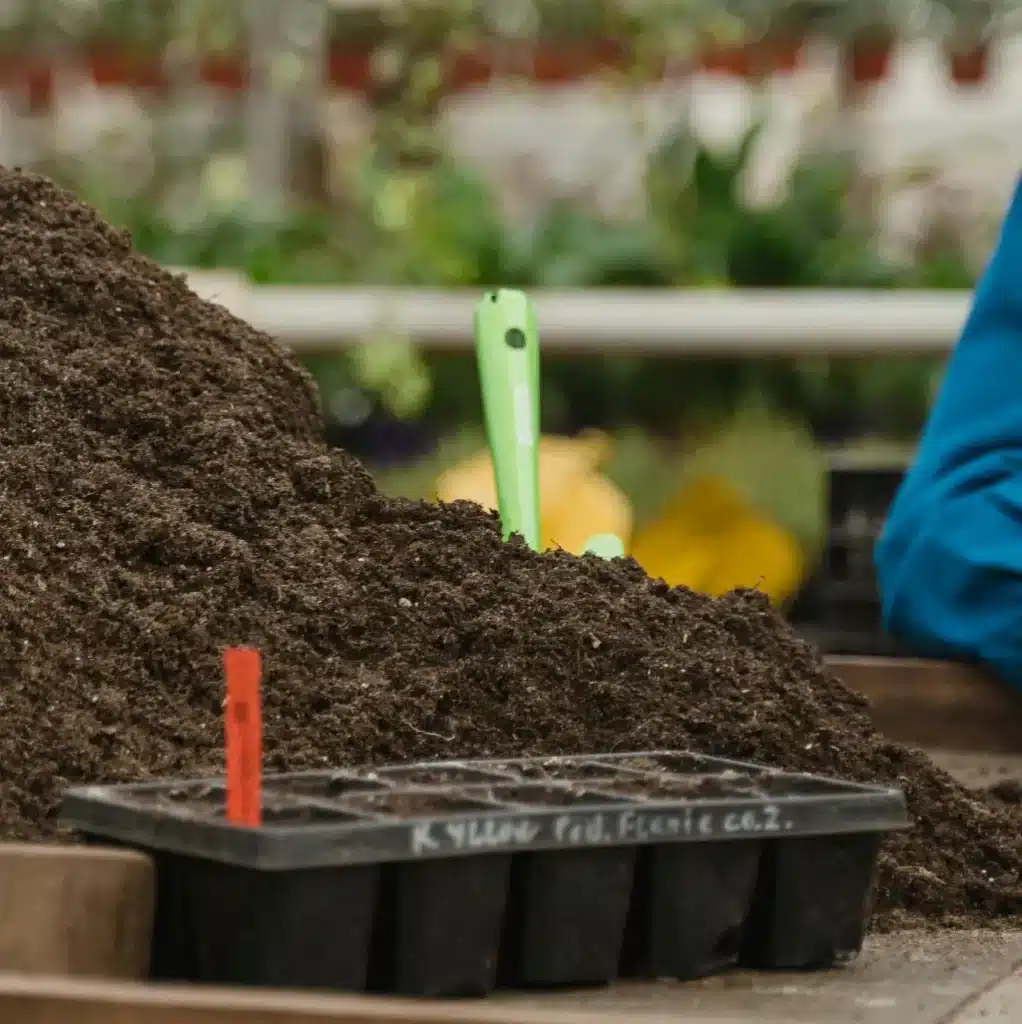
Cannabis Seedling Light Distance for Optimal Growth
The Importance of Cannabis Seedling Light Distance
When setting up your cannabis seedling light distance, it’s important to remember that for LED grow lights, cannabis seedlings typically need lights positioned 24–36 inches (60–90 cm) above the canopy, though this range can vary significantly depending on the light’s wattage and type. The general rule is to keep lights further away to avoid damaging delicate seedlings with excessive light intensity or heat. Continuously monitor how your plants respond adjust the light height accordingly: move the light closer if the seedlings become leggy, or increase the distance if you notice any signs of burning or bleaching.
Why Light Distance Matters for Cannabis Seedlings
The distance between your lights and cannabis seedlings plays a crucial role in their development. Too close, and you risk burning the seedlings. Too far, and they might become leggy and weak, struggling to get the light they need. It’s a delicate balance that can affect your entire grow cycle. Proper cannabis seedling light distance ensures that seedlings receive the right amount of light for photosynthesis without causing heat stress or light burn.
Recommended Strains
Critic Boom
|
|
THC | 20% - 25% (Medium) |
|
|
Type | Feminized |
|
|
Yield | High |
|
|
Phenotype | 40% Indica / 60% Sativa |
Critical 2.0
|
|
THC | 18% - 22% (Medium) |
|
|
Type | Feminized |
|
|
Yield | High |
|
|
Phenotype | 60% Indica / 40% Sativa |
Light is the primary source of energy for plants, driving photosynthesis and growth. When cannabis seedlings are too close to the light source, they can suffer from photoinhibition, where excessive light intensity inhibits photosynthesis and causes damage to the chlorophyll in the leaves. This leads to burnt, crispy edges on the leaves and overall stunted growth. Conversely, when seedlings are too far from the light, they do not receive enough energy to sustain healthy growth, resulting in elongated stems and weak structures.
Common Mistakes in Light Distance Management
Many growers make the mistake of placing lights too close, thinking it will accelerate growth. However, this often leads to burnt leaves and stunted growth. On the flip side, placing lights too far away can result in elongated stems as seedlings stretch towards the light, weakening the plant structure. Avoid these pitfalls by learning the optimal light distance for your setup.
Another common mistake is not adjusting the light distance as the seedlings grow. As your cannabis plants develop, their light needs change. Failing to adjust the light distance can lead to suboptimal growth conditions. For example, young seedlings might need a greater distance from the light compared to more mature plants. Regularly checking and adjusting the light distance can help prevent these issues and promote vigorous growth.
The Science Behind Light Intensity and Seedling Growth
Light intensity diminishes with distance, following the inverse square law. This means that even small adjustments in light distance can significantly impact the amount of light your seedlings receive. This principle helps you fine-tune the light distance to ensure optimal growth conditions.
The inverse square law states that the intensity of light is inversely proportional to the square of the distance from the source. In practical terms, if you double the distance between the light and the seedlings, the light intensity is reduced to a quarter. This principle underscores the importance of precise adjustments in light distance to maintain the optimal intensity for your cannabis seedlings.
Promos & Deals
Optimal Light Distance for Different Light Types
Different types of grow lights have varying intensities and heat outputs, requiring specific distances to ensure healthy seedling growth. The characteristics of each light type can help you set the perfect cannabis seedling light distance.

LED Lights: Best Practices for Cannabis Seedlings
LED lights are popular for their efficiency and low heat output. For seedlings, maintaining a distance of 12-24 inches is generally recommended. Start closer to the 24-inch mark and gradually decrease the distance as the seedlings grow, monitoring their response to the light.
LED lights offer a full spectrum of light, which is beneficial for all stages of plant growth. They produce less heat compared to other light types, reducing the risk of heat stress. However, the intensity of LED lights can still be quite strong, so it’s important to start with a greater distance and adjust as needed.
When using LED lights, consider the specific model and its light output. Some high-power LEDs might require a greater distance to prevent light burn. Regularly check the seedlings for signs of stress and adjust the light distance accordingly. Ensuring the right cannabis seedling light distance with LED lights can lead to strong, healthy plants ready for the vegetative stage.
Fluorescent Lights: Ideal Distances for Healthy Growth
Fluorescent lights, including T5s, are great for seedlings due to their gentle light and minimal heat. Position these lights about 4-6 inches above your seedlings. This close distance provides ample light without the risk of burning.
Fluorescent lights are energy-efficient and produce a spectrum that is well-suited for seedling growth. Their low heat output allows for closer placement, which is ideal for young seedlings that require less intense light. This close proximity ensures that the seedlings receive enough light to support healthy growth and development.
When using fluorescent lights, monitor the growth and adjust the light distance as the seedlings develop. As the plants grow taller, you may need to increase the distance slightly to ensure even light distribution and prevent shading of lower leaves. Proper management of cannabis seedling light distance with fluorescent lights can promote strong root development and robust seedlings.
HID Lights: Managing Light Distance Effectively
High-Intensity Discharge (HID) lights, such as MH and HPS, are powerful but generate more heat. For seedlings, a distance of 24-36 inches is recommended. Use your hand to test the heat at the seedling level – if it’s too hot for your hand, it’s too hot for your plants.
HID lights are known for their intense light output and are commonly used during the vegetative and flowering stages. However, their high heat production requires careful management of light distance to prevent heat stress and burning. Starting with a greater distance allows seedlings to acclimate to the intense light without suffering from excessive heat.
As your cannabis seedlings grow, you can gradually lower the HID lights, but always monitor the temperature at the canopy level. Using a thermometer to measure the temperature directly above the seedlings can help ensure that you maintain the optimal cannabis seedling light distance without causing heat-related issues.
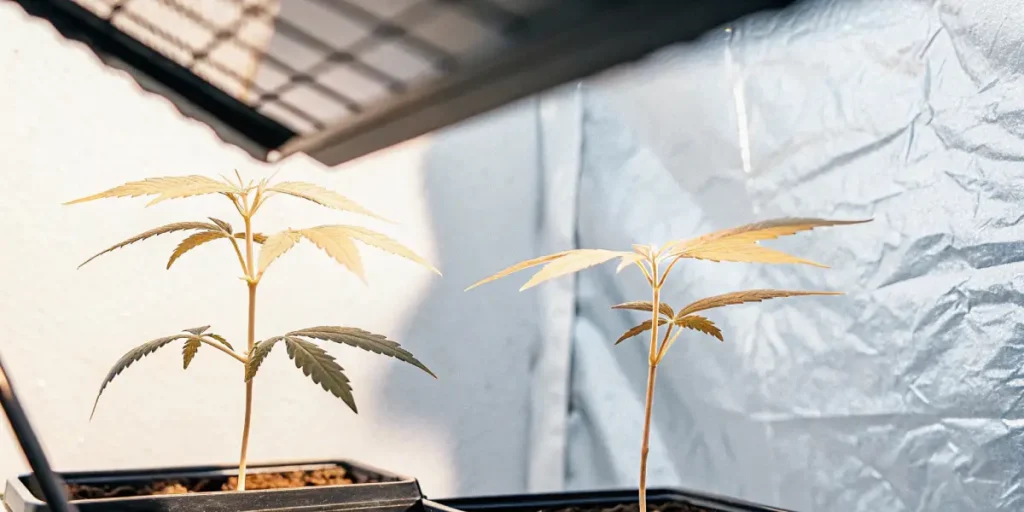
How to Adjust Light Distance for Cannabis Seedlings
Adjusting light distance isn’t a one-time task; it requires ongoing attention to keep your seedlings happy and healthy. Regular adjustments based on plant growth and environmental conditions are essential for maintaining the ideal cannabis seedling light distance.
Step-by-Step Guide to Measuring Light Distance
Start by measuring the initial distance between your light and the top of the seedlings. Use a ruler or measuring tape for accuracy. Check this distance daily and adjust as the seedlings grow, ensuring they remain at an optimal distance.
- Measure the distance from the light source to the top of the tallest seedling.
- Record the distance and note any signs of stress or growth issues.
- Adjust the light distance as needed based on the seedlings’ response and growth rate.
- Repeat this process daily to ensure the light distance remains optimal.
Regular measurement and adjustment help prevent common issues such as light burn or insufficient light exposure. This proactive approach ensures that your cannabis seedlings receive the right amount of light at every stage of growth.
Tools and Techniques for Adjusting Light Height
Invest in adjustable light hangers or pulley systems to easily modify the height of your lights. These tools allow for precise adjustments, ensuring you can maintain the perfect light distance as your seedlings grow.
Adjustable light hangers, such as ratchet rope hangers, provide a simple and effective way to change the height of your lights. Pulley systems offer more control and ease of adjustment, making it easier to fine-tune the light distance without disturbing the seedlings.
Additionally, consider using a light meter to measure the actual light intensity at the canopy level. This tool can provide valuable insights into whether your seedlings are receiving the optimal amount of light and help you make informed adjustments to the cannabis seedling light distance.
Monitoring Seedling Response to Light Distance Changes
Pay close attention to how your seedlings respond to changes in light distance. Signs of distress, such as leaf burn or stretching, indicate a need for adjustment. Healthy seedlings will have sturdy stems and vibrant, green leaves.
Monitor the overall health and growth rate of your seedlings daily. Look for signs of optimal growth, such as strong, upright stems, vibrant green leaves, and consistent growth rates. If you notice any abnormalities, such as discoloration, curling leaves, or excessive stretching, adjust the light distance accordingly.
Keeping a grow journal can help you track changes and their effects on your seedlings. Note the light distance, any adjustments made, and the seedlings’ responses. This record can provide valuable insights for future grows and help you refine your cannabis seedling light distance management techniques.
Troubleshooting Light Distance Issues
Even with careful planning, issues with light distance can arise. Knowing how to identify and correct these problems is crucial for maintaining healthy seedlings. Troubleshooting common light distance issues can prevent long-term damage and ensure your seedlings thrive.
Signs Your Cannabis Seedlings Are Too Close to the Light
If your seedlings’ leaves are curling upwards, developing brown spots, or showing signs of bleaching, they’re likely too close to the light. Move the light higher and monitor their recovery.
Leaf burn and bleaching are clear indicators of excessive light intensity. The leaves might appear crispy or have brown edges, signaling that the light is too intense. Immediate action is necessary to prevent further damage and ensure the seedlings recover quickly.
Identifying Symptoms of Insufficient Light Distance
Seedlings that are too far from the light will become leggy, with long, weak stems. They might also exhibit pale, yellowish leaves as they struggle to photosynthesize. Lower the light to provide more intense illumination.
Leggy seedlings with elongated stems are a common symptom of insufficient light. The plants stretch towards the light source, resulting in weak and spindly growth. Pale or yellow leaves indicate that the seedlings are not receiving enough light for healthy photosynthesis.
Solutions for Correcting Light Distance Problems
Adjusting the light distance is the primary solution. Additionally, consider the light’s angle and intensity. Reflective materials around the grow area can help disperse light more evenly, ensuring all seedlings receive adequate illumination.
Reflective surfaces, such as Mylar or white walls, can enhance light distribution and reduce the need for frequent adjustments. Positioning lights at an angle can also help distribute light more evenly across all seedlings, ensuring uniform growth and development.
Using light movers is another effective solution for managing light distance. These devices move the light source back and forth, providing even light coverage and reducing the risk of hot spots. This can help maintain an optimal cannabis seedling light distance and promote healthy growth.
Expert Tips for Managing Light Distance
Expert growers have honed their techniques over years of experience. Here are some of their best practices for managing light distance effectively. Learning from experienced growers can provide valuable insights and help you avoid common pitfalls.
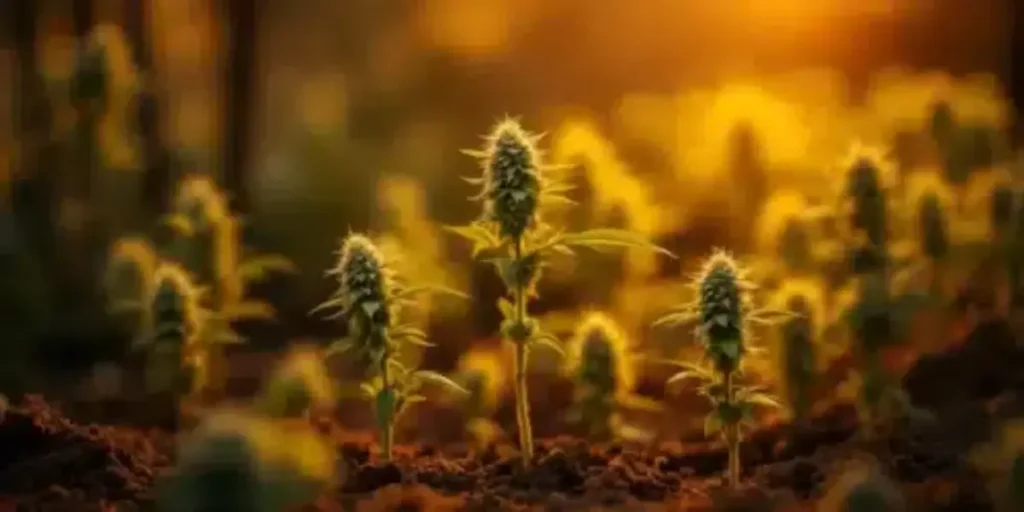
Cannabis Seedling Light Distance – Balancing Light Distance with Other Growth Factors
Light distance is just one factor in successful seedling growth. Ensure you’re also maintaining proper humidity, temperature, and airflow. These factors work in harmony with light distance to create an ideal growing environment.
Optimal humidity levels (around 60-70% for seedlings) and temperatures (between 70-75°F) support healthy growth. Adequate airflow prevents heat buildup and promotes strong stem development. Balancing these factors with the right cannabis seedling light distance creates a thriving environment for your seedlings.
Cannabis Seedling Light Distance – Best Practices from Experienced Growers
Experienced growers recommend a gradual approach to adjusting light distance. Start with lights higher and lower them incrementally, observing the seedlings’ responses. This method reduces stress on the plants and allows for optimal growth.
Gradual adjustments help seedlings acclimate to changing light conditions without experiencing shock. Regularly check for signs of stress and make small adjustments as needed. This proactive approach can prevent common issues and ensure your seedlings develop strong, healthy structures.
Cannabis Seedling Light Distance – Advanced Techniques for Maximizing Seedling Growth
For those looking to push the limits, advanced techniques such as light movers and spectrum adjustments can be explored. Light movers help distribute light evenly across all seedlings, while adjusting the light spectrum can enhance specific growth stages.
Light movers simulate the natural movement of the sun, providing even light distribution and reducing the risk of hot spots. Adjusting the light spectrum, such as using blue light for vegetative growth and red light for flowering, can optimize growth and development at each stage.
Implementing these advanced techniques requires careful planning and monitoring, but they can significantly enhance your growing results. Mastering cannabis seedling light distance is key to maximizing your seedlings’ potential and achieving a successful harvest.
FAQs
What is the Ideal Distance for LED Lights?
For cannabis seedlings, the ideal distance for LED lights is generally between 12-24 inches. Start at the higher end of this range and gradually lower the lights as the seedlings grow, adjusting based on their response.
How Close Should Fluorescent Lights Be to Cannabis Seedlings?
Fluorescent lights should be positioned about 4-6 inches above cannabis seedlings. This close distance ensures adequate light without causing heat stress or burn.
Can HID Lights Be Used for Seedlings?
Yes, HID lights can be used for seedlings, but they should be placed 24-36 inches away to prevent heat damage. Regularly monitor the temperature at the seedling level to ensure optimal conditions.
What Are the Signs of Light Burn in Seedlings?
Signs of light burn in cannabis seedlings include curled leaves, brown spots, and bleaching. If you notice these symptoms, increase the light distance immediately.
How Can I Measure Light Intensity?
Using a light meter, you can measure the actual light intensity at the canopy level. This tool provides accurate readings to help you maintain the optimal cannabis seedling light distance.
What Happens If Seedlings Are Too Far from the Light?
If cannabis seedlings are too far from the light, they will become leggy and weak, with pale leaves. Lower the light to provide more intense illumination and support healthy growth.
How Often Should I Adjust the Light Distance?
Adjust the light distance daily or as needed based on the growth rate and response of your seedlings. Regular adjustments ensure they receive the optimal amount of light.
Can Reflective Materials Help with Light Distribution?
Yes, reflective materials like Mylar or white walls can enhance light distribution and ensure all seedlings receive adequate illumination. This reduces the need for frequent light distance adjustments.
What Is the Best Way to Prevent Light Distance Issues?
Regular monitoring and adjustment of the light distance, combined with proper environmental control (humidity, temperature, and airflow), can prevent most light distance issues.
Are There Any Advanced Tools for Managing Light Distance?
Light movers and adjustable light hangers are advanced tools that can help you manage light distance more effectively. These tools provide even light distribution and make adjustments easier.



